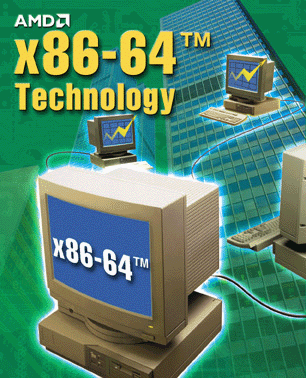AMD CPU & Chipset Roadmap - November 2000
by Anand Lal Shimpi on November 21, 2000 6:13 PM EST- Posted in
- CPUs
The Mustang rides off into the sunset
As you all have probably heard by now, AMD has cancelled their Mustang which was supposed to be another Athlon core that is specifically aimed at the workstation/server market. The Mustang core is still on AMD’s roadmap in spirit as the Palomino is a derivative of Mustang, but instead of having two separate cores for the performance desktop and server/workstation market, AMD will just be sticking to the Palomino.
The only advantage the Mustang would offer over Palomino would be a larger L2 cache, but AMD has something else planned for the niche market that demands that.
In the first half of 2002 AMD will be debuting their x86-64 architecture, which we explained in our article entitled AMD’s Voyage into the 64-bit Arena: x86-64 Revealed. The x86-64 processor we area all familiar with is the SledgeHammer, designed mainly to compete with the Itanium by offering the benefits of a 64-bit architecture while offering the same level of 32-bit application performance as the Athlon.

The second processor that AMD has announced will use their x86-64 architecture is the ClawHammer which will actually precede the SledgeHammer’s release in the first quarter of 2002. Very little is known about ClawHammer other than it will be aimed at single or dual processor workstation and server systems and a very small portion of the performance desktop market.
The ClawHammer will offer the same 32-bit performance as the Thoroughbred, but will add 64-bit support courtesy of its x86-64 implementation. The ClawHammer will debut at speeds of 2GHz, conveniently enough just shortly after Intel is scheduled to surpass the 2GHz mark with their Northwood Pentium 4 which is still a 32-bit only processor. For most users, the 64-bit capabilities of the ClawHammer will remain unused, however it will be perfect for those individuals that have a need to go down Intel’s Itanium route but are holding off on it because of a continued need for solid 32-bit performance.
An interesting note about the 0.13-micron ClawHammer is that it will have a die size of under 100 mm^2. This is smaller than the original K7 core without any on-die L2 cache. If the ClawHammer is going to be this small you can expect to see the Thoroughbred in a similar size range as well.










0 Comments
View All Comments